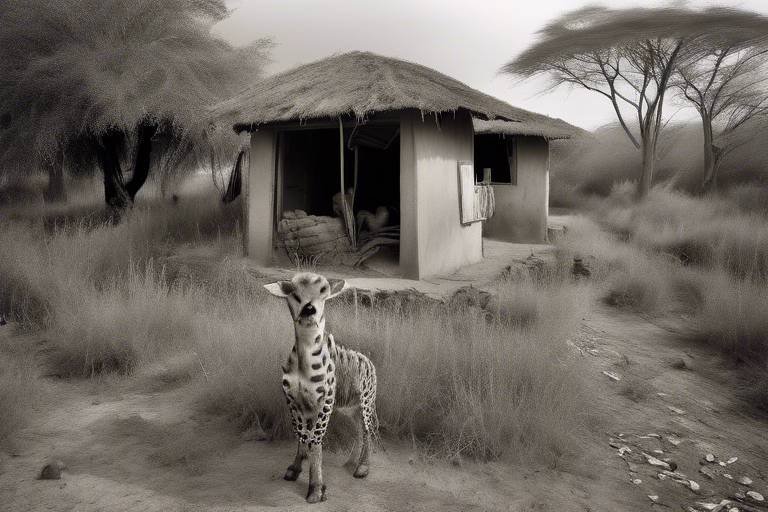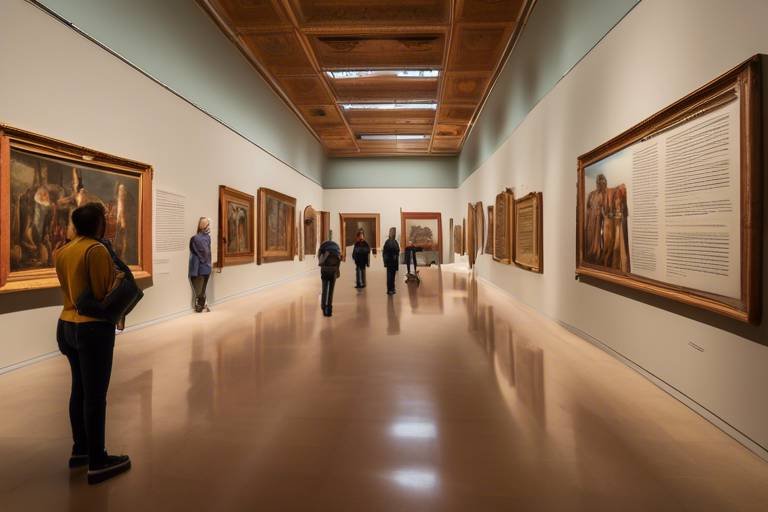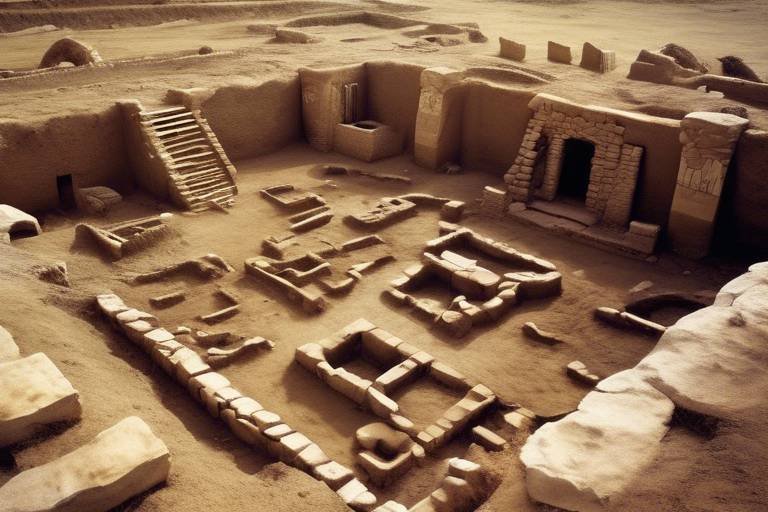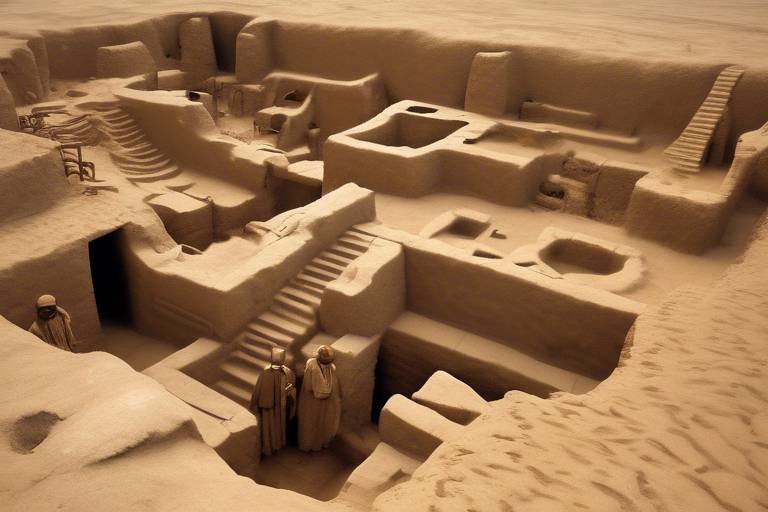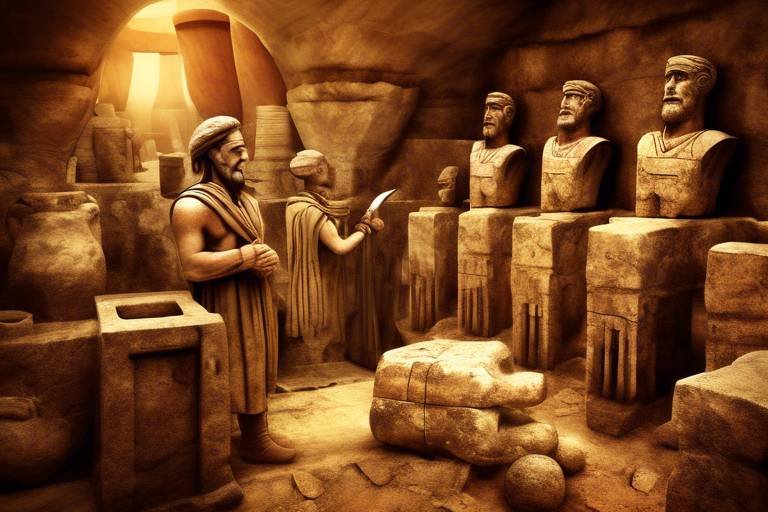UNESCO World Heritage Sites - Preservation Challenges
UNESCO World Heritage Sites hold an unparalleled significance in preserving the cultural, historical, and natural heritage of humanity. These sites are not just physical locations but repositories of stories, traditions, and knowledge passed down through generations. They serve as a bridge connecting us to our past, offering insights into diverse civilizations and ecosystems that have shaped our world.
However, the very essence of UNESCO World Heritage Sites is under threat from various challenges that jeopardize their existence. Climate change poses a significant risk, leading to erosion, flooding, and other environmental impacts that can irreversibly damage these sites. Urbanization and unchecked development encroach upon the boundaries of these heritage sites, altering their surroundings and integrity. Tourism, while essential for raising awareness and funding, also brings with it the risk of overexploitation and degradation. Armed conflicts further escalate the vulnerability of these sites, subjecting them to deliberate destruction and looting.
Despite these formidable challenges, extensive conservation efforts are being undertaken globally to safeguard UNESCO World Heritage Sites. Preservation initiatives range from physical interventions like restoration and maintenance to strategic planning for sustainable management. The involvement of local communities is crucial in ensuring the long-term protection of these sites, as their knowledge and connection to the land are invaluable assets in conservation efforts.
Technology has emerged as a powerful ally in the preservation of UNESCO sites, offering innovative solutions to age-old problems. Drones provide aerial surveys and monitoring, enabling detailed assessments of site conditions. 3D scanning techniques capture intricate details for documentation and restoration purposes, preserving the sites in digital form. Geographic Information Systems (GIS) facilitate data management and analysis, aiding in informed decision-making for conservation strategies.
Financial sustainability remains a pressing issue in the conservation of UNESCO World Heritage Sites. Traditional funding sources may not always be sufficient or reliable, necessitating the exploration of new financing models. Public-private partnerships, crowdfunding campaigns, and heritage impact investing are some of the innovative approaches being considered to ensure the continued protection of these invaluable sites.
International cooperation and legal frameworks play a vital role in the preservation of UNESCO sites, transcending borders to unite efforts in safeguarding our shared heritage. Treaties and agreements establish guidelines for the protection and management of these sites, fostering collaboration among nations to address common challenges and uphold collective responsibilities.
The COVID-19 pandemic has brought unforeseen challenges to heritage conservation, disrupting tourism revenue, limiting access to sites, and straining conservation budgets. The closure of UNESCO World Heritage Sites during lockdowns has highlighted the vulnerability of these sites to external crises, underscoring the need for resilience and adaptability in the face of unexpected disruptions.
Looking ahead, the future of UNESCO World Heritage Sites presents a complex landscape of both threats and opportunities. As we navigate the evolving challenges of climate change, urbanization, and global crises, innovative strategies and proactive measures will be essential in ensuring the sustainable preservation of these irreplaceable treasures for future generations.

Importance of UNESCO World Heritage Sites
The UNESCO World Heritage Sites hold immense significance for humanity, serving as custodians of our shared cultural, historical, and natural heritage. These sites are not merely static monuments but living testaments to the diverse civilizations that have shaped our world over centuries. They provide a window into the past, offering insights into the ingenuity, creativity, and resilience of our ancestors.
By safeguarding these sites, we preserve not only physical structures but also intangible values, traditions, and knowledge that are integral to our identities. These sites are irreplaceable treasures that connect us to our roots, inspire creativity, and foster a sense of belonging and pride in our collective heritage.
Furthermore, UNESCO World Heritage Sites play a crucial role in promoting cultural exchange, understanding, and dialogue among nations. They transcend borders and languages, serving as bridges that unite people from diverse backgrounds in appreciation of our common humanity.

Threats to UNESCO World Heritage Sites
Preserving UNESCO World Heritage Sites is crucial due to the numerous threats that these invaluable locations face. One of the primary challenges is climate change, which poses a significant risk to the integrity of these sites. Rising sea levels, extreme weather events, and temperature changes can lead to erosion, flooding, and structural damage, endangering the very essence of these cultural and natural wonders.
Urbanization also presents a major threat to UNESCO sites. Rapid urban development often encroaches upon these heritage areas, leading to habitat destruction, pollution, and alteration of the surrounding landscape. The delicate balance between modernization and preservation is essential to safeguard the authenticity and value of these sites for future generations.
Moreover, tourism can be a double-edged sword when it comes to UNESCO World Heritage Sites. While tourism can raise awareness, generate revenue, and support conservation efforts, over-tourism can result in overcrowding, pollution, and wear and tear on the infrastructure. Finding a sustainable balance that allows for visitation while minimizing negative impacts is crucial for the long-term preservation of these sites.
Additionally, armed conflicts pose a severe threat to UNESCO World Heritage Sites, especially in regions plagued by violence and instability. These conflicts not only put human lives at risk but also result in deliberate destruction, looting, and damage to cultural and historical treasures that hold significant value for humanity. Protecting these sites during times of conflict requires international cooperation, diplomacy, and dedicated efforts to mitigate the impact of warfare on cultural heritage.
In conclusion, the threats facing UNESCO World Heritage Sites are diverse and complex, requiring a multifaceted approach to conservation and protection. Addressing these challenges demands collaboration, innovation, and a shared commitment to safeguarding our shared heritage for future generations.

Conservation Efforts
Conservation efforts aimed at protecting UNESCO World Heritage Sites are crucial in ensuring the preservation of these irreplaceable cultural and natural treasures for future generations. These initiatives encompass a wide range of strategies and actions designed to mitigate the threats posed by various factors, including climate change, urban development, and tourism pressures.
One key aspect of conservation efforts is the implementation of sustainable management plans that balance the need for site protection with visitor access and enjoyment. This involves the careful monitoring of visitor numbers, the establishment of visitor guidelines, and the development of infrastructure that minimizes the impact on the site's integrity.
Furthermore, conservation efforts often involve extensive research and documentation to better understand the site's significance and vulnerabilities. This includes the use of advanced technologies such as 3D scanning and GIS mapping to create detailed digital models of the site, aiding in both conservation planning and monitoring.
Collaboration with local communities is also integral to successful conservation efforts. By engaging with residents living near the heritage site, conservationists can gain valuable insights into traditional practices, local knowledge, and community needs. This participatory approach not only fosters a sense of ownership and pride among locals but also ensures that conservation strategies are culturally sensitive and sustainable.
In addition to community involvement, international cooperation plays a vital role in heritage conservation. Through partnerships with other countries, organizations, and experts, valuable resources, expertise, and funding can be shared to address common challenges and implement best practices in conservation management.
Financial sustainability is another critical aspect of conservation efforts. Securing adequate funding for ongoing maintenance, restoration projects, and staff training is essential for the long-term preservation of UNESCO World Heritage Sites. Innovative funding mechanisms, such as public-private partnerships, crowdfunding campaigns, and heritage tourism initiatives, are increasingly being explored to diversify revenue streams and ensure financial stability.
Overall, effective conservation efforts require a multi-faceted approach that combines scientific research, community engagement, international cooperation, and sustainable funding strategies. By working together to protect these unique and irreplaceable sites, we can ensure that they continue to inspire and educate future generations about the richness and diversity of our shared heritage.

Role of Technology in Preservation
Technology plays a pivotal role in the preservation of UNESCO World Heritage Sites, revolutionizing the way these precious locations are documented, monitored, and protected. With the advent of cutting-edge tools and techniques, conservationists and archaeologists can now employ drones for aerial surveys and mapping, providing detailed insights into the topography and condition of heritage sites. Additionally, 3D scanning technology allows for the creation of digital replicas of artifacts and structures, ensuring their preservation for future generations.
Furthermore, Geographic Information Systems (GIS) have become indispensable in managing and analyzing spatial data related to UNESCO sites, facilitating informed decision-making processes regarding conservation strategies and site management. By leveraging these technological advancements, experts can better understand the impact of environmental changes, human activities, and natural disasters on heritage sites, enabling proactive measures to safeguard them from potential threats.

Community Engagement
Community engagement plays a vital role in the preservation and sustainable management of UNESCO World Heritage Sites. By involving local communities in decision-making processes and conservation efforts, a sense of ownership and responsibility is fostered, leading to better protection of these invaluable sites. Communities living in close proximity to heritage sites often have valuable traditional knowledge and practices that can contribute to their preservation. Through collaboration with local residents, heritage conservation initiatives can benefit from diverse perspectives and ensure the long-term sustainability of these sites.

Funding and Financial Sustainability
Funding plays a crucial role in the preservation and conservation of UNESCO World Heritage Sites. These sites require significant financial resources to ensure their protection and maintenance for future generations to appreciate and enjoy. The financial sustainability of these heritage sites is often challenged by various factors, including lack of adequate funding, competing priorities, and economic uncertainties.
One of the primary challenges faced in funding UNESCO World Heritage Sites is the limited availability of resources. Governments and organizations responsible for these sites often struggle to allocate sufficient funds due to budget constraints and other pressing needs. As a result, many heritage sites are left vulnerable to deterioration and damage, threatening their long-term preservation.
To address the funding gap, innovative financing mechanisms are being explored to support the conservation efforts of UNESCO sites. Public-private partnerships, crowdfunding campaigns, and sponsorship programs have emerged as alternative sources of funding to supplement government allocations. These initiatives not only raise awareness about the importance of heritage conservation but also engage a wider audience in supporting these endeavors.
Furthermore, international cooperation plays a vital role in securing financial support for UNESCO World Heritage Sites. Collaborative efforts between countries, organizations, and donors help pool resources and expertise to ensure the sustainable preservation of these culturally and historically significant sites. By sharing financial responsibilities and leveraging global partnerships, the financial sustainability of these heritage sites can be better ensured.
In addition to traditional funding sources, endowment funds and trusts are being established to provide a steady income stream for the maintenance and conservation of UNESCO World Heritage Sites. These financial instruments help generate long-term financial stability, ensuring ongoing support for the protection of these invaluable cultural treasures.
Overall, achieving financial sustainability for UNESCO World Heritage Sites requires a multi-faceted approach that combines government funding, private sector contributions, international cooperation, and community involvement. By securing adequate financial resources and implementing innovative funding mechanisms, these heritage sites can be safeguarded for future generations to cherish and admire.

Legal Frameworks and International Cooperation
Legal frameworks and international cooperation play a crucial role in safeguarding the integrity and authenticity of UNESCO World Heritage Sites. These sites are not just national treasures but belong to all of humanity, requiring a collaborative effort on a global scale to ensure their preservation for future generations.
International agreements such as the 1972 UNESCO World Heritage Convention provide a legal framework for the identification, protection, and conservation of these exceptional cultural and natural sites. Through this convention, countries commit to preserving their designated heritage sites and cooperate with other nations to address common challenges.
Furthermore, international cooperation fosters knowledge sharing, capacity building, and joint initiatives to tackle issues that transcend borders. By working together, countries can exchange best practices, expertise, and resources to enhance the conservation efforts of UNESCO World Heritage Sites.
Legal mechanisms at the national level also play a crucial role in protecting heritage sites from threats such as illegal excavation, looting, and inappropriate development. Laws and regulations help establish boundaries, zoning restrictions, and enforcement measures to safeguard the integrity of these sites and prevent unauthorized activities that could compromise their authenticity.
Moreover, collaboration between governments, non-governmental organizations, local communities, and international bodies is essential for the effective management and sustainable development of UNESCO World Heritage Sites. By engaging stakeholders at various levels, including indigenous communities and heritage experts, a holistic approach can be adopted to ensure the long-term preservation of these irreplaceable treasures.
In conclusion, the protection of UNESCO World Heritage Sites requires a multi-faceted approach that combines legal frameworks, international cooperation, community involvement, and sustainable practices. By upholding shared values of heritage conservation and promoting cross-border partnerships, we can secure these iconic landmarks for generations to come.

Impact of COVID-19 on Heritage Conservation
The has been profound, reshaping the landscape of preservation efforts worldwide. The pandemic brought about unprecedented challenges to the safeguarding of UNESCO World Heritage Sites, disrupting ongoing conservation projects and threatening the sustainability of these invaluable cultural and natural treasures.
One of the most immediate impacts of the global health crisis was the closures of heritage sites to visitors, depriving them of essential revenue from tourism. With travel restrictions and lockdown measures in place, many sites faced a significant decrease in footfall, leading to financial strain on conservation efforts and maintenance activities.
Moreover, the reduced tourism not only affected the economic aspect but also the overall awareness and appreciation of these sites. The lack of visitors meant fewer advocates for preservation and a potential decline in public support for conservation initiatives.
The financial strain caused by the pandemic further exacerbated existing challenges in funding conservation projects. Many heritage sites rely heavily on entrance fees, donations, and sponsorships to cover maintenance costs and restoration works. The sudden drop in revenue due to COVID-19 restrictions posed a significant threat to the long-term sustainability of these sites.
Despite the adversities faced during the pandemic, the crisis also sparked innovation in the conservation sector. With physical access to sites limited, organizations and experts turned to virtual technologies to continue monitoring and documenting heritage sites. Remote sensing tools, online platforms, and digital archives played a crucial role in maintaining engagement with the public and advancing conservation efforts.
As the world gradually recovers from the impact of COVID-19, the heritage conservation sector faces the challenge of rebuilding and adapting to the new normal. Balancing the need for increased digitalization and virtual experiences with the essential on-site preservation work will be a key focus moving forward.
Ultimately, the pandemic highlighted the interconnectedness of global challenges and the importance of resilience in the face of unforeseen disruptions. It underscored the significance of proactive planning, community engagement, and international cooperation in safeguarding our shared cultural and natural heritage for future generations.

Future Prospects and Challenges
Looking into the future of UNESCO World Heritage Sites brings both prospects and challenges to the forefront. As we strive to preserve these invaluable cultural and natural treasures for future generations, several key factors come into play.
One of the main challenges on the horizon is the escalating impact of climate change. Rising sea levels, extreme weather events, and other environmental shifts pose a significant threat to the integrity of many heritage sites. Finding sustainable solutions to mitigate these effects and adapt to changing conditions is crucial for long-term preservation.
Furthermore, the rapid pace of urbanization and development continues to encroach upon these sites, leading to increased pressure on their surroundings. Balancing the need for economic growth with the imperative to protect our shared heritage remains a delicate task that requires careful planning and collaboration.
On the flip side, technological advancements offer promising prospects for the conservation of UNESCO sites. Innovations such as 3D scanning, virtual reality, and digital documentation provide new tools for monitoring, analyzing, and safeguarding these sites in innovative ways. Embracing these technologies can enhance our ability to preserve heritage for future generations.
Community engagement also plays a vital role in shaping the future of heritage conservation. By involving local communities in decision-making processes, promoting sustainable tourism, and fostering a sense of ownership, we can ensure that these sites remain relevant and protected for years to come.
Financial sustainability is another critical aspect that will determine the future prospects of UNESCO World Heritage Sites. Finding innovative funding mechanisms, attracting private investments, and diversifying revenue streams are essential for ensuring the long-term viability of conservation efforts.
As we navigate the complex landscape of heritage preservation, international cooperation and legal frameworks will continue to be instrumental in addressing cross-border challenges and fostering collaboration among nations. Strengthening partnerships, sharing best practices, and upholding international agreements are key to safeguarding these sites for the benefit of all humanity.
In conclusion, the future of UNESCO World Heritage Sites holds both promise and uncertainty. By addressing the challenges ahead with innovation, collaboration, and a shared commitment to conservation, we can pave the way for a sustainable future where these sites thrive as living testaments to our collective heritage.
Frequently Asked Questions
- What are UNESCO World Heritage Sites?
UNESCO World Heritage Sites are landmarks or areas that have been recognized by the United Nations Educational, Scientific and Cultural Organization (UNESCO) for their cultural, historical, scientific, or other form of significance, and are legally protected by international treaties.
- How many UNESCO World Heritage Sites are there?
As of [current year], there are [number] UNESCO World Heritage Sites located in [number] countries around the world. These sites represent a diverse range of cultural and natural heritage that is considered of outstanding value to humanity.
- What are the criteria for a site to be designated as a UNESCO World Heritage Site?
For a site to be inscribed on the UNESCO World Heritage List, it must meet one or more of the selection criteria, which include representing a masterpiece of human creative genius, exhibiting an important interchange of human values, bearing a unique or exceptional testimony to a cultural tradition, or being an outstanding example of a natural phenomenon.
- How are UNESCO World Heritage Sites protected?
UNESCO World Heritage Sites are protected through a combination of international treaties, national laws, management plans, and the efforts of local communities and international organizations. These sites are monitored and evaluated regularly to ensure their preservation for future generations.
- Can anyone visit UNESCO World Heritage Sites?
Most UNESCO World Heritage Sites are open to visitors, but access and regulations may vary depending on the site and its conservation needs. It is important for visitors to respect the rules in place to safeguard the integrity and authenticity of these cultural and natural treasures.





